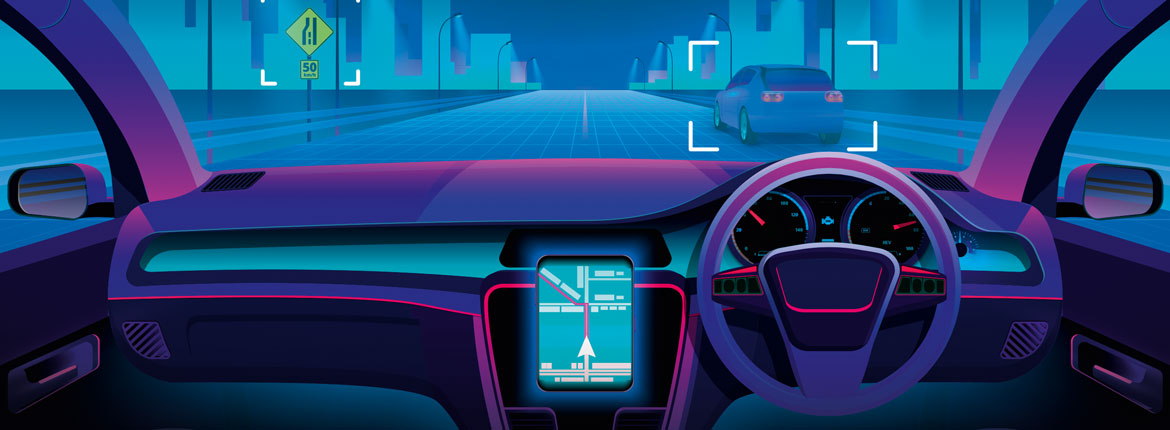Did you know that the exterior of a modern vehicle is a hiding place for all sorts of sensors and cameras?
Whether you’re a driver, a passenger or a pedestrian, these devices work together to help keep you safe.
Known as Advanced Driver Assistance Systems (ADAS), the technology uses networks of vehicle-based sensors to alert drivers to changing driving situations and enable the vehicle itself to react appropriately and instantly.
If you’ve noticed extra items mounted around your car’s rear-view mirror or extra shaded areas on the windscreen,
it’s likely your car is equipped with ADAS. It’s not all safety-related: rain and dusk sensors can also be tucked in behind the rear-view mirror.
ADAS operate through a windscreen’s glass using cameras, lasers or infrared beams, in combination with radars and sensors. If your front windscreen ever requires replacement or needs to be removed for any reason, it is important that the repairer is aware of the sensors’ positions and can ensure correct calibration procedures are followed.
If the wrong type of windscreen is fitted, or if the sensors are fitted incorrectly ‒ even just by a few millimetres ‒ these technologies may not function properly.
Some ADAS functions will not work properly if the windscreen is dirty, obstructed, or even when vision is restricted due to very foggy conditions. However, a warning should flash on your dashboard if any of these systems are disabled and the repair might be as simple as turning on the windscreen wipers.
Tucked in behind bumpers, badges and under the door mirrors could be proximity sensors, which use ultrasound or radar and cameras.
These sensors combine images to give a 360° bird’s-eye view of the car for the automatic parking features, allowing the driver to navigate the vehicle into tight parking spots without hesitation. Proximity sensors are also used in features such as Rear Cross Traffic Alert, Blind Spot Detection and Rear Collision Warning.
Driver assistance systems can be both passive and active. A passive system alerts the driver to a potentially dangerous situation so the driver can take action to correct it. For example, the function known as Lane Departure Warning (LDW) alerts the driver of unintended or unsignalled lane changes. A Forward Collision Warning (FCW) indicates that a collision is imminent with the vehicle ahead under the current dynamics. The driver needs to brake and is alerted accordingly.
On the other hand, active safety systems take action on the driver’s behalf. Autonomous Emergency Braking (AEB) identifies an imminent collision and brakes without any driver intervention. Other examples of active functions are Adaptive Cruise Control (ACC), Lane Keeping Assist (LKA), and Traffic Jam Assist (TJA). Technology can also warn a driver in advance and even stop a vehicle from driving into a pedestrian or object.
To maintain the accuracy of these important safety features and assist systems, ADAS sensors are precisely aimed and require calibration if their positions are disturbed in any way.
A collision or even routine maintenance such as wheel alignments or suspension repairs can upset the balance of the system. If a sensor is out of position, the vehicle receives faulty information that could cause ADAS to operate improperly or not at all. Faulty sensor input can cause a warning light or message to appear, a diagnostic trouble code to be stored in the vehicle’s computer memory, or even a change in vehicle characteristics.
It may sound all a bit far-fetched, but this technology is fast becoming the norm for everyday vehicles as we look to an autonomous future.
Reported by Cade Wilson for our AA Directions Summer 2018 issue




